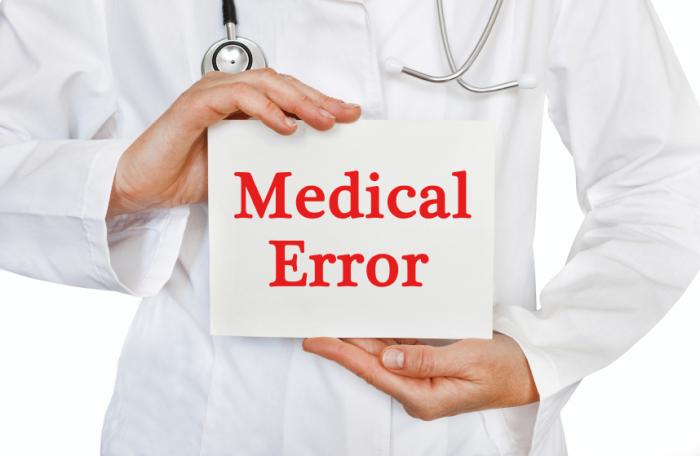Contents
What Is Malpractice in the Healthcare System?
Medical malpractice is a significant concern in the healthcare system, impacting patient safety, trust in medical professionals, and the overall quality of care. While most healthcare providers strive to deliver the best possible treatment, errors and lapses in judgment can—and do—occur. When these mistakes fall below the accepted standard of care and cause harm to a patient, they may be classified as medical malpractice. Understanding what constitutes malpractice, its various forms, and its implications is crucial for both patients and healthcare providers.
Defining Medical Malpractice
At its core, medical malpractice is a legal term that refers to professional negligence by a healthcare provider. It occurs when a doctor, nurse, hospital, or other medical professional fails to provide care that meets the accepted standards of practice in the medical community, resulting in injury, harm, or even death to a patient. The standard of care is defined as the level and type of care that a reasonably competent and skilled healthcare professional, with a similar background and in the same medical community, would have provided under similar circumstances.
Medical malpractice is not simply a matter of an undesirable outcome. Medicine is complex, and not all treatments are successful. However, when harm results from a provider’s deviation from the accepted standard of care, rather than from the inherent risks of treatment, malpractice may have occurred.
Key Elements of Medical Malpractice
For a situation to be legally recognized as medical malpractice, four key elements must typically be present:
-
Duty of Care: There must be a formal relationship between the healthcare provider and the patient, establishing a duty to provide care.
-
Breach of Standard of Care: The provider must have failed to meet the standard of care expected in their field.
-
Causation: The breach must have directly caused injury or harm to the patient.
-
Damages: The patient must have suffered actual harm, such as physical injury, emotional distress, additional medical expenses, or loss of income.
All four elements must be proven for a malpractice claim to be successful in court.
Common Types of Medical Malpractice
Medical malpractice can take many forms, and some types occur more frequently than others. Here are the most common examples:
1. Misdiagnosis or Delayed Diagnosis
One of the most prevalent forms of malpractice, misdiagnosis occurs when a healthcare provider incorrectly identifies a patient’s condition, while delayed diagnosis refers to a failure to diagnose a condition in a timely manner. Both can lead to inappropriate or delayed treatment, worsening the patient’s condition. For instance, a missed cancer diagnosis can allow the disease to progress to an advanced stage, reducing the chance of successful treatment.
2. Surgical Errors
Mistakes during surgery are another leading cause of malpractice claims. These errors can include operating on the wrong body part, performing the wrong procedure, leaving surgical instruments inside the patient, or causing unnecessary injury to surrounding tissues. Surgical errors can result in serious complications, infections, or the need for additional surgeries.
3. Medication Errors
Medication errors are alarmingly common and can occur at any stage, from prescribing and dispensing to administering and monitoring drugs. Examples include prescribing the wrong medication or dosage, failing to account for drug interactions, giving medication to the wrong patient, or overlooking allergies. Such errors can cause severe reactions, organ damage, or even death.
4. Failure to Treat
In some cases, a provider may correctly diagnose a condition but fail to provide appropriate treatment. This can involve discharging a patient too soon, not ordering necessary follow-up tests, or ignoring established treatment protocols. Failure to treat can result in preventable complications or deterioration of the patient’s health.
5. Birth Injuries
Mistakes made during pregnancy, labor, or delivery can result in birth injuries to both the mother and the infant. Examples include improper use of delivery tools, failure to monitor fetal distress, or delayed decisions to perform a cesarean section. Birth injuries can lead to lifelong disabilities such as cerebral palsy or nerve damage.
6. Anesthesia Errors
Errors related to anesthesia, though less common, can have immediate and catastrophic consequences. These include administering the wrong dosage, failing to monitor the patient’s vital signs, or not recognizing allergic reactions. Anesthesia errors can result in brain damage, permanent disability, or death.
7. Lack of Informed Consent
Before undergoing any procedure, patients have the right to be informed about the risks, benefits, and alternatives. If a provider fails to obtain proper informed consent and the patient suffers harm from a procedure they might have refused had they been fully informed, this can constitute malpractice.
Legal and Ethical Implications
Medical malpractice is both a legal and ethical issue. Legally, it falls under the category of negligence. Patients who believe they have been harmed by malpractice can file a lawsuit seeking compensation for their injuries. These cases often require expert testimony to establish what the standard of care should have been and how it was breached.
Ethically, malpractice undermines trust in the healthcare system. Providers have a moral obligation to uphold the highest standards of care, communicate openly with patients, and take responsibility for their actions.
Patient Rights and Recourse
Patients have the right to expect competent and safe care. If they believe they have been victims of malpractice, they can pursue legal action for compensation, which may cover medical expenses, lost wages, pain and suffering, and other damages. Additionally, patients can file complaints with medical boards or regulatory agencies, which can investigate and discipline providers when necessary.
Distinguishing Malpractice from Unfortunate Outcomes
It is important to note that not every bad outcome is the result of malpractice. Some illnesses are incurable, and complications can arise even with the best care. Malpractice specifically involves a deviation from accepted standards that directly causes harm.
Conclusion
Medical malpractice in the healthcare system is a serious issue that involves a breach of the standard of care, resulting in patient harm. It encompasses a range of errors, from misdiagnosis and surgical mistakes to medication errors and lack of informed consent. Understanding malpractice helps protect patients’ rights, promotes accountability among providers, and encourages a culture of safety and continuous improvement in healthcare. By staying informed and engaged, both patients and providers can work together to reduce the risk of malpractice and improve health outcomes for all.



